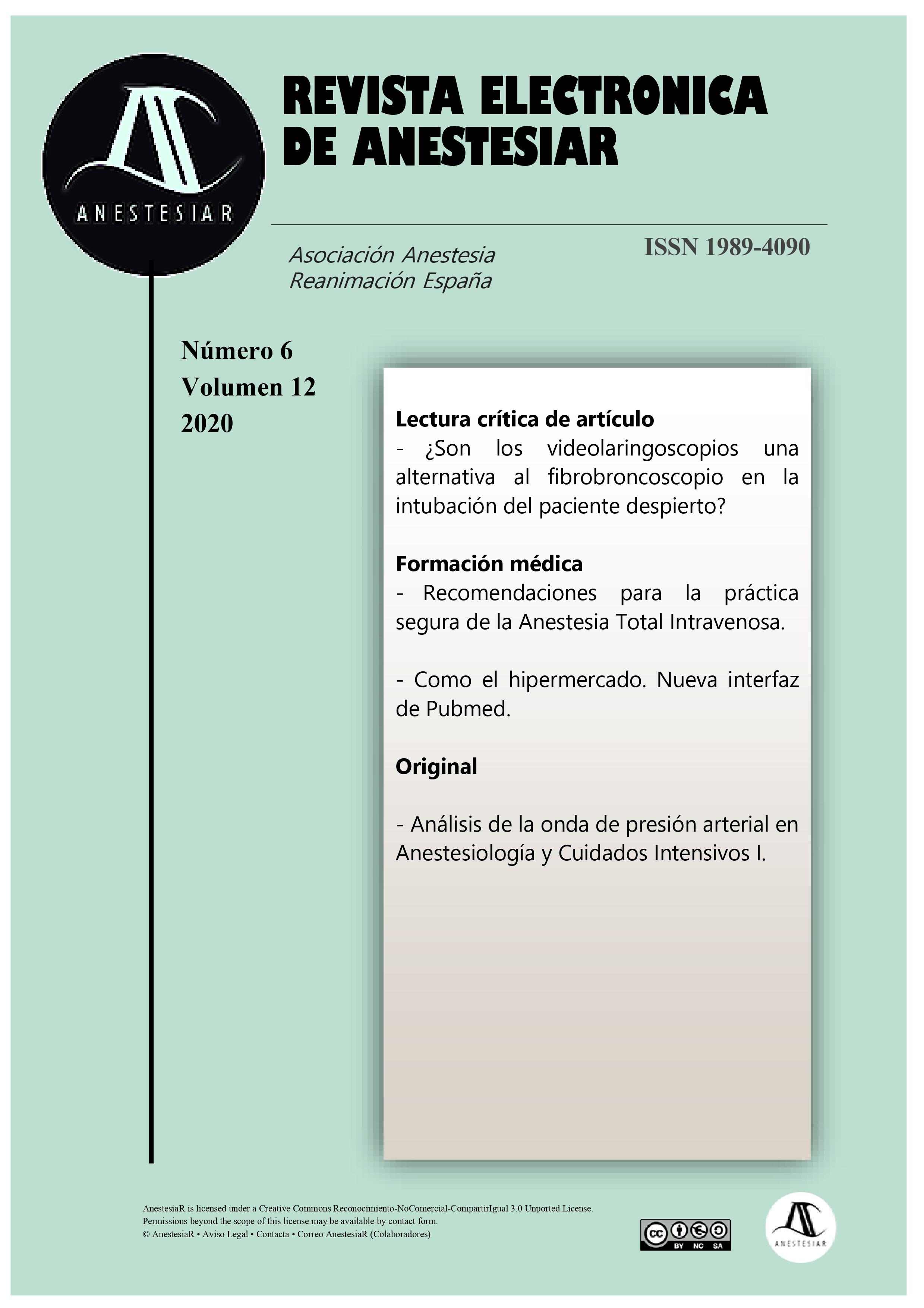Are videolaryngoscopy an alternative option to fibreoptic bronchoscopy in awake patient intubation?
DOI:
https://doi.org/10.30445/rear.v12i6.756Keywords:
fibrobroncoscope, videolaryngoscopy, awake intubationAbstract
Awake fiberoptic intubation is the most widely used approach in the management of the known difficult airway. However, there are several problems that limit this technique. Most anesthesiologists agree on the challenging nature of fiberoptic intubation training. The maintenance of this skill requires regular practice. Among the known risks of this technique are airway hiperreactivity due to inadequate topic anesthesia, excessive sedation or agitation, nasal hemorrhage and, in some cases, progression from partial to complete airway obstruction. Vídeolaryngoscopy can be an alternate option in the management of known difficult airway. These devices are becoming widely used because they are easy to use, inexpensive and versatile, and thus they can be used in a wider variety and number of patients.
References
- Mendonca C, Mesbah A, Velayudhan A, Danha R. A randomised clinical trial comparing the flexible fibrescope and the Pentax Airway Scope (AWS) for awake oral tracheal intubation. Anaesthesia 2016; 71 (8): 908-14.
- Fiadjoe JE, Litman RS. Difficult tracheal intubation: looking to the past to determine the future. Anesthesiology 2012; 116 (6): 1181-2.
- Thong SY, Lim Y. Video and optic laryngoscopy assited tracheal intubation-the new era. Anaesth Intensive Care 2009; 37(2): 219-33.
- Rose DK, Cohen MM. The airway: problems and predictions in 18500 patients. Can J Anaesth 1994; 41 (5 Pt 1): 372-83.
- Fitzgerald E, Hodzovic I, Smith AF. From darkness into light: time to make awake intubation with videolaryngoscopy the primary technique for an anticipated difficult airway?. Anaesthesia 2005; 70 (4): 375-92.
- Mhyre JM, Healy D. The unanticipated difficult intubatin in obsterics. Anesth Analg 2011; 112 (3): 648-52.
- Rosenstock CV, Thogersen B, Afshari A, Christensen AL, Eriksen C, Gätke MR. Awake fiberoptic or awake videolaryngoscopic tracheal intubation in patients with anticipated difficult airway mangement. Anesthesiology 2016; 116 (6): 1210-6.
- Xue FS, Liu GP, Li RP. Awake nasotracheal intubation using videolaryngoscopy or fiberoptic bronchoscopy. Anaesthesia 2015; 70 (7): 878-91.
Downloads
Published
How to Cite
Issue
Section
License
Copyright (c) 2020 Revista Electrónica AnestesiaR

This work is licensed under a Creative Commons Attribution-ShareAlike 4.0 International License.
 Envío y derechos de autor
Envío y derechos de autor


 Revista Electrónica AnestesiaR by
Revista Electrónica AnestesiaR by 